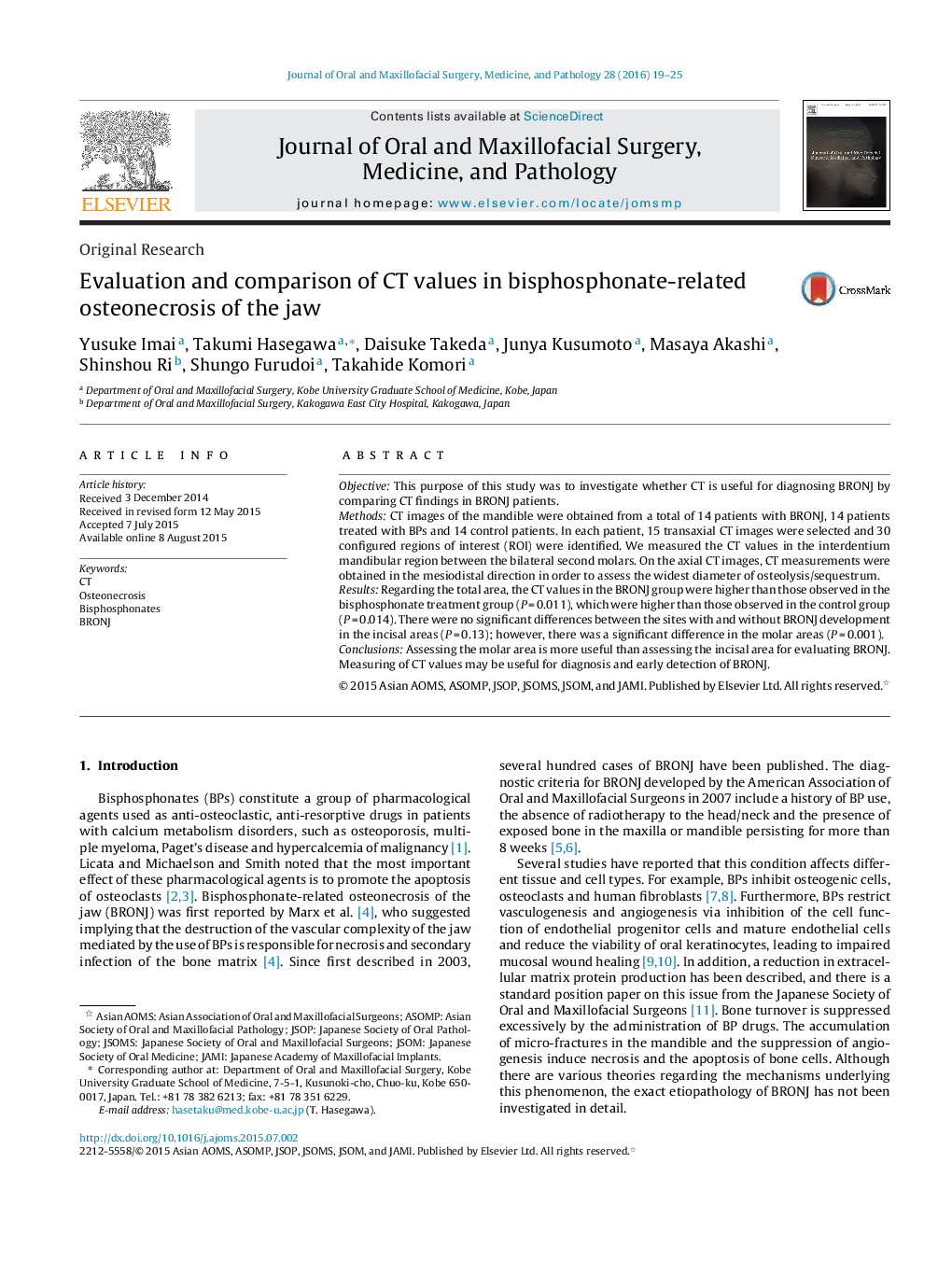| Article ID | Journal | Published Year | Pages | File Type |
|---|---|---|---|---|
| 3160358 | Journal of Oral and Maxillofacial Surgery, Medicine, and Pathology | 2016 | 7 Pages |
ObjectiveThis purpose of this study was to investigate whether CT is useful for diagnosing BRONJ by comparing CT findings in BRONJ patients.MethodsCT images of the mandible were obtained from a total of 14 patients with BRONJ, 14 patients treated with BPs and 14 control patients. In each patient, 15 transaxial CT images were selected and 30 configured regions of interest (ROI) were identified. We measured the CT values in the interdentium mandibular region between the bilateral second molars. On the axial CT images, CT measurements were obtained in the mesiodistal direction in order to assess the widest diameter of osteolysis/sequestrum.ResultsRegarding the total area, the CT values in the BRONJ group were higher than those observed in the bisphosphonate treatment group (P = 0.011), which were higher than those observed in the control group (P = 0.014). There were no significant differences between the sites with and without BRONJ development in the incisal areas (P = 0.13); however, there was a significant difference in the molar areas (P = 0.001).ConclusionsAssessing the molar area is more useful than assessing the incisal area for evaluating BRONJ. Measuring of CT values may be useful for diagnosis and early detection of BRONJ.
